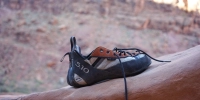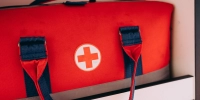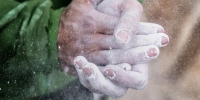Latest Article
Join The Newsletter
Subscribe to get our latest content and updates by email. We won't send you spam. Unsubscribe at any time.

















Yes, climbing shoes can get wet. In fact, many people wash them to clean them, some even put them in washing machines too (I have never tried it, there is quite a bit of debate on the washing machine approach).
Also, while climbing, even if it's not really noticed, people sweat in their shoes, especially in the summer and when climbing outdoors. It's very common to take off climbing shoes to find out that the insides of yours shoes are pretty wet.